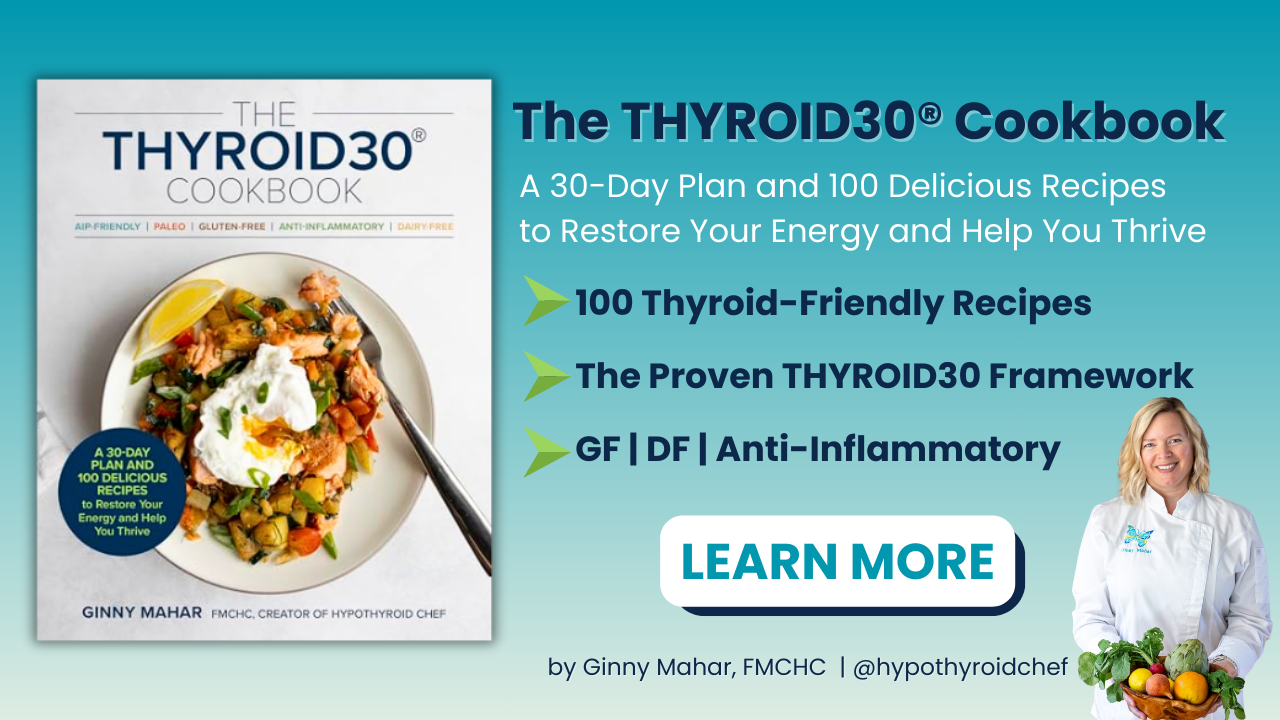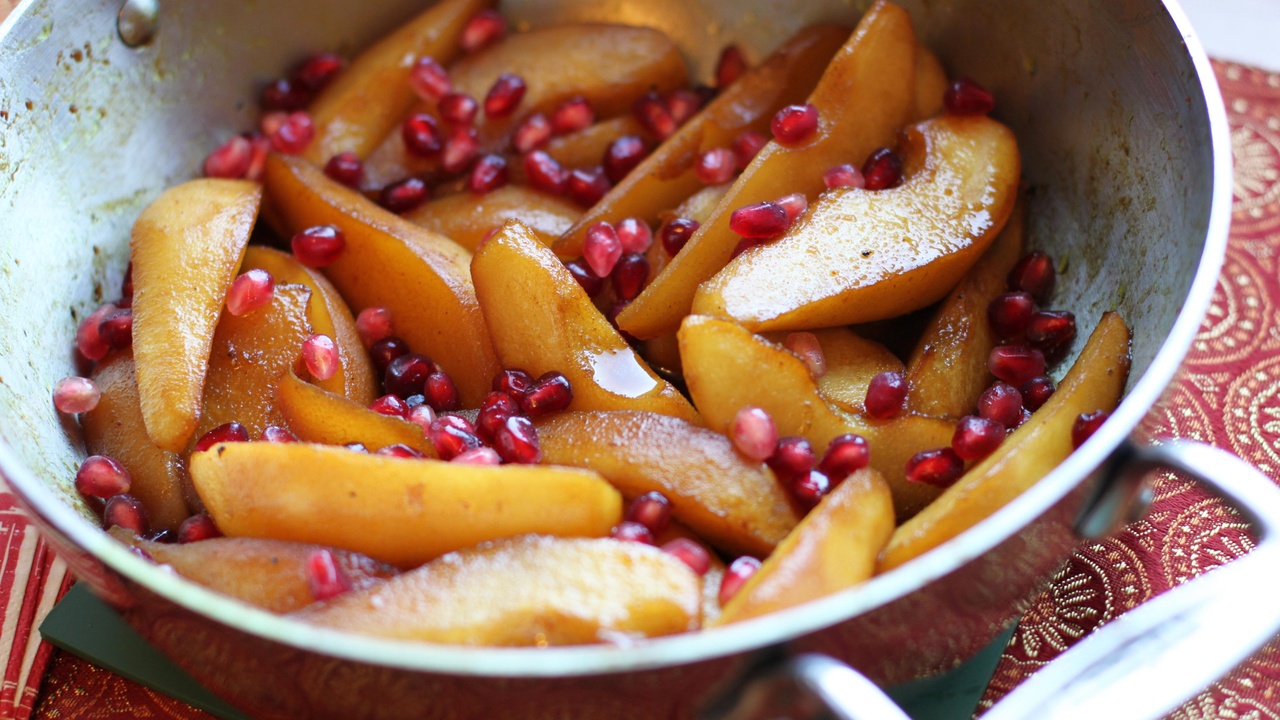Pumpkin Sage Macaroni and 'Cheese' with Crispy Shallot Topping

I’ve fully arrived in my squash era, and this cozy, nutrient-packed recipe is one of the reasons why. What started as an attempt to recreate a beloved but dairy-heavy mac and cheese from my pre-Hashi’s days turned into something even better.
Sweet roasted squash, fresh sage, and crispy shallots blend into a velvety, dairy-free sauce that tastes indulgent but is secretly packed with thyroid-friendly nutrients. Toss it with your favorite gluten-free or grain-free pasta, sprinkle on those irresistible crispy shallots, and you’ve got a fall-inspired mac that satisfies everyone at the table — even the skeptics.
👇 Scroll down to grab the full printable recipe, or cook along with me in the step-by-step YouTube video.
Full disclosure: Some of the links in this post may be affiliate links. As an Amazon Associate, I earn from qualifying purchases. Purchasing a product using one of these links will support my work at no additional cost to you. Please know that I only recommend products I wholeheartedly stand by.
Chef’s Notes: The Recipe Origin Story
I started tinkering with this recipe around Thanksgiving time, trying to re-create a beloved Butternut Mac & Cheese recipe from my pre-Hashi's life. The original was made with regular pasta, milk, and loads of cheese, with just a little tiny bit of squash.
In this recipe facelift, I replaced the milk with coconut milk and broth, the cheese with nutritional yeast and dairy-free cream cheese, and the pasta with my favorite gluten-free brand of macaroni. I also dialed up the nutrient density by making squash the main event.
The tougher issue to solve was the original panko breadcrumb topping. There are plenty of GF breadcrumb options to choose from, but I didn’t want a packaged ingredient — and I definitely wasn’t going down the nut/plantain chip/pork rind route.
Then I remembered the magic of squash + caramelized onions + sage. Crispy shallots are like caramelized onions on steroids: deeply savory, crunchy, and totally irresistible. Pairing them with sweet roasted squash, sage, and warm spices felt promising… and it absolutely worked.
To build even more flavor, I fried the shallots in ghee and then used that shallot-infused ghee to make the roux (a fat-and-flour paste for thickening), which becomes the béchamel, which becomes the “cheese” sauce. That's a lot of culinary lingo, but really it just means that there are layers of flavor in every bite.
I did try a baked version in my next test round, but gluten-free pasta plus oven time equals overcooked mush. Baking also removes moisture, and with a starchy squash base, the dish came out dry and clumpy. Tasty, but not up to Hypothyroid Chef standards.
So I went back to the stovetop, blended the sauce silky smooth, tossed it with freshly cooked pasta, topped it with those crispy shallots, and dove right in.
Bullseye! The finished result was sweet, savory, creamy, complex, and exactly what I was after. It even passed the kid test!
While this would make a wonderful fall or Thanksgiving side, it’s delicious any time winter squashes are in season: fall, winter, early spring, even the tail-end of summer.
This recipe is gluten and dairy-free. If you use grain and legume-free pasta, like this Cassava Macaroni from Jovial, it's also Paleo-compliant.
Try this next: Stuffed Delicata Squash with Sausage, Greens, and Garlic
What's the Best Kind of Squash to Use?
For this recipe, any kind of sweet, pumpkin-type winter squash would work. I used Kabocha, which is like a small green pumpkin, with very sweet, bright orange flesh. Similar varieties include Sunshine, Jarrahdale, Cinderella, Sugar Pie Pumpkin, and Buttercup Squash. All of those varieties are pumpkin-shaped, with deep-orange flesh, and lots of natural sweetness. Part of what makes these varieties work well is that they provide a good amount of squash and are easy to roast, scoop, and mash.
That said, finding these varieties might be difficult, and I don’t want you to feel like it’s necessary to run around town hunting down a Kabocha when more common varieties like butternut or even canned pumpkin would make fine understudies.
Personally, I would avoid smaller (albeit still delicious) varieties like acorn, delicata, or carnival squash, mainly because they're too small to yield enough squash, and scooping the flesh can be a little awkward with deeply ridged varieties. But if that’s what you have on hand, and you’re up for the extra prep time, there wouldn’t be anything wrong with how they would taste.
Best Squash Choices: Kabocha, Sunshine, Buttercup, Jarrahdale, Cinderella, Sugar Pie Pumpkin.
Thyroid-healthy Highlights:
- 1 serving of winter squash contains between 150% and 450% DV for Vitamin A, which may help reduce the risk of developing hypothyroidism. Winter squash is also high in several other key thyroid-supporting nutrients, including vitamin C, vitamin B6, potassium, magnesium, and dietary fiber.
- Though it is naturally sweet and filling, the glycemic load for winter squash is very low, with a score of 5 out of 250, making it a good choice for weight loss.
- Coconut products such as coconut milk contain a wide array of vitamins and minerals, in addition to healthy fats known as MCTs (medium-chain triglycerides) or MCFAs (medium-chain fatty acids). Consumption of these fats has been touted for various health benefits such as brain health, weight loss, and cholesterol balance. Coconut can also be a positive dietary substitution for refined carbs and sugar, which can diminish thyroid and overall health. NOTE: Coconut milk does contain an incredibly high amount of fat (approx. 45g per can) – something to be mindful of for those watching their weight.
- Nutritional Yeast has many health benefits, especially for those who do not eat animal protein. It is a complete protein and a great source of B Vitamins and trace minerals. It also contains the potent antioxidants glutathione and selenomethionine, which can help protect us from chronic disease caused by oxidative stress, free radicals, and environmental toxins.
- Bone broth is one of the most highly recommended foods for anyone suffering from an autoimmune disease. The collagen and glycine can help repair cell damage in the intestinal tract. It also supports hair, skin, and nail health, as well as our body's detox pathways.
Looking For More Thyroid-Friendly Recipes?
The Thyroid30 Cookbook brings together 100 of my best gluten-free, dairy-free, anti-inflammatory recipes — plus three done-for-you 30-day meal plans and the complete THYROID30 system designed to boost energy, reduce overwhelm, and help you build sustainable habits that truly support your thyroid and your life.
If you’re ready for meals you love that love you back, and lifestyle tools that make feeling better more doable, I wrote this cookbook for you.
Happy cooking, happy thriving, and enjoy the recipe (below)!

More Thyroid-Friendly Sides to Try:
- Olive Oil Mashed Cauliflower & Sweet Potatoes
- Tuna Macaroni Salad (Gluten Free)
- Chive Potato Salad
- The Ultimate Gluten-free, Dairy-free Mashed Potatoes and Gravy
- Bacon and Chive Scalloped Potatoes
- Chex Mix-Inspired Delicata Rings
- Mashed Winter Squash, Three Ways
Subscribe to my free newsletter for fresh recipes & lifestyle tips, delivered weekly, and receive a free gift!
By submitting this form, you agree to receive ongoing updates from Hypothyroid Chef









